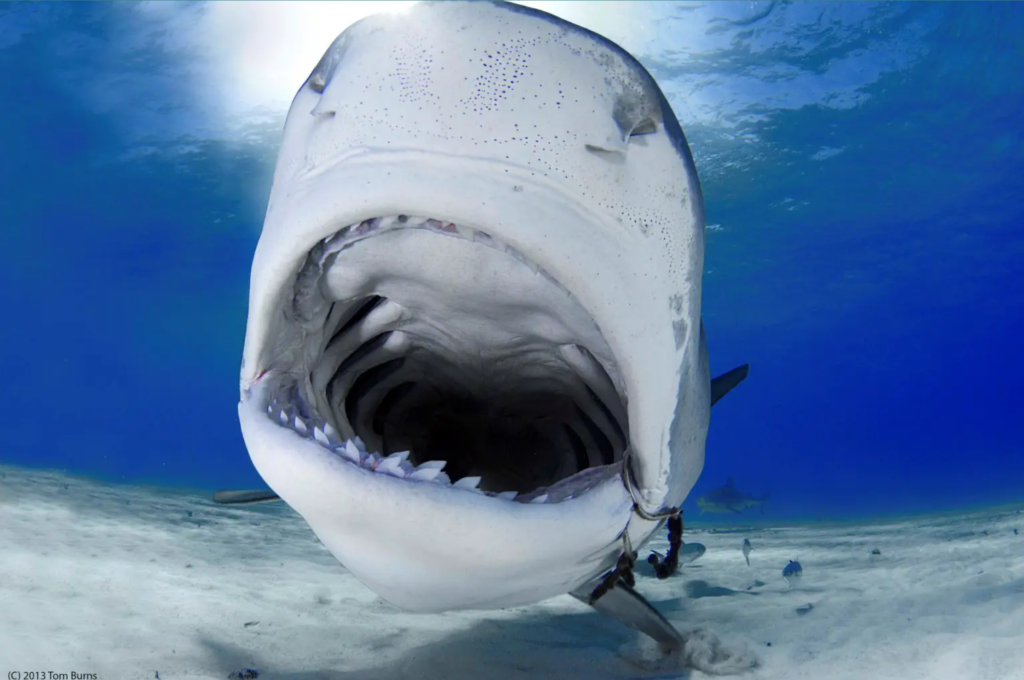The deep sea , especially the mesopelagic zone between 200 and 1000 meters below the surface, is one of the most mysterious and least explored habitats on Earth. Yet, it is home to a vast and diverse community of life, including many large predators such as sharks, tunas, and billfish. These animals are often thought to be residents of the surface ocean, where they hunt for prey and migrate across long distances. However, a new study reveals that they also make frequent and surprising visits to the dark, deep sea, where they encounter a different and abundant food source1.
How did they find out? :In the deep sea
The study, published in the journal Proceedings of the National Academy of Sciences, was led by Camrin Braun, an assistant scientist at the Woods Hole Oceanographic Institution (WHOI), and involved multiple scientific partners. The researchers used a combination of data from electronic tags, shipboard sonar, Earth-observing satellites, and ocean models to track the movements and behaviours of 12 species of large pelagic predators in the North Atlantic Ocean, including white sharks, tiger sharks, whale sharks, yellowfin tuna, swordfish, and more1.

The Deep Sea
Also read : Nature’s Gene Editors: Algae and Snails Unveil a New Frontier in Genetic Manipulation(CRISPR)
The electronic tags, attached to 344 animals over 46,659 tracking days, recorded the diving patterns and locations of the predators. The shipboard sonar, deployed on research vessels, measured the density and distribution of the deep scattering layer (DSL), a zone where a huge number of small fish and marine organisms are packed so densely that they reflect sound waves. The DSL is found in the mesopelagic zone during the day, but rises to the surface at night, following a daily rhythm called diel vertical migration. The satellites and ocean models provided information on the environmental conditions and ocean currents that affect the predators and their prey1.

The Deep Sea
By integrating and analyzing these data sets, the researchers were able to quantify the ecological significance of the deep sea for the large predators, and to identify the factors that influence their diving behavior1.
Why do they dive?
The researchers found that the large predators made a surprising number of visits to the mesopelagic zone, regardless of their species, location, or season. They also found that the predators tended to dive more frequently and deeper when the DSL was deeper and denser, indicating that they were following their prey. The predators also adjusted their diving behaviour according to the light conditions, the moon phase, and the ocean currents, which affect the visibility and accessibility of their prey1.

The Deep Sea
A new study demonstrates that large predatory fishes like sharks, tunas, and billfish make a surprising number of visits to the deep ocean—particularly the ocean’s twilight zone, which has been overlooked as critical habitat for large predator species. Credit: Tiger Shark /©Tom Burns
The researchers estimated that the large predators consumed about 15% of the total biomass of the DSL in the North Atlantic Ocean, which is equivalent to about 660 million tons of prey per year. This suggests that the mesopelagic zone is a critical feeding ground for the large predators, and that the DSL is a major source of energy and nutrients for the surface ocean1.
What are the implications?
The study demonstrates that the deep sea is not a barren and isolated environment, but a dynamic and interconnected ecosystem that supports a wide range of life forms, including large predators. The study also reveals that the large predators play a key role in transferring energy and matter between the deep and surface ocean, and that they are influenced by the physical and biological processes that shape the ocean1.

The study has important implications for the conservation and management of the large predators, as well as the mesopelagic zone and the DSL. The large predators are facing increasing threats from overfishing, climate change, and habitat loss, which could affect their survival and function. The mesopelagic zone and the DSL are also vulnerable to human activities, such as deep-sea mining, fishing, and pollution, which could alter their structure and function. The study highlights the need for more research and monitoring of the deep sea, and for more cooperation and regulation among stakeholders, to ensure the sustainable and responsible use of this valuable and fascinating resource1
Conclusion: Illuminating the Depths of Marine Behaviour
As technology continues to advance and unveil the secrets of the deep sea, the intentional dives of marine predators add another layer of complexity to our understanding of marine behaviour. These purposeful excursions underscore the resourcefulness and adaptability of marine life, revealing a dynamic and interconnected web of life beneath the waves. As we peer into the depths, guided by new insights, the mysteries of the deep sea slowly come into focus, promising further revelations about the intricacies of marine ecosystems and the fascinating behaviours of the creatures that call the ocean home.
Also read : Beyond Science Fiction: Witnessing The World’s First Live-Birth Chimeric Monkey, Radiant In Green




































